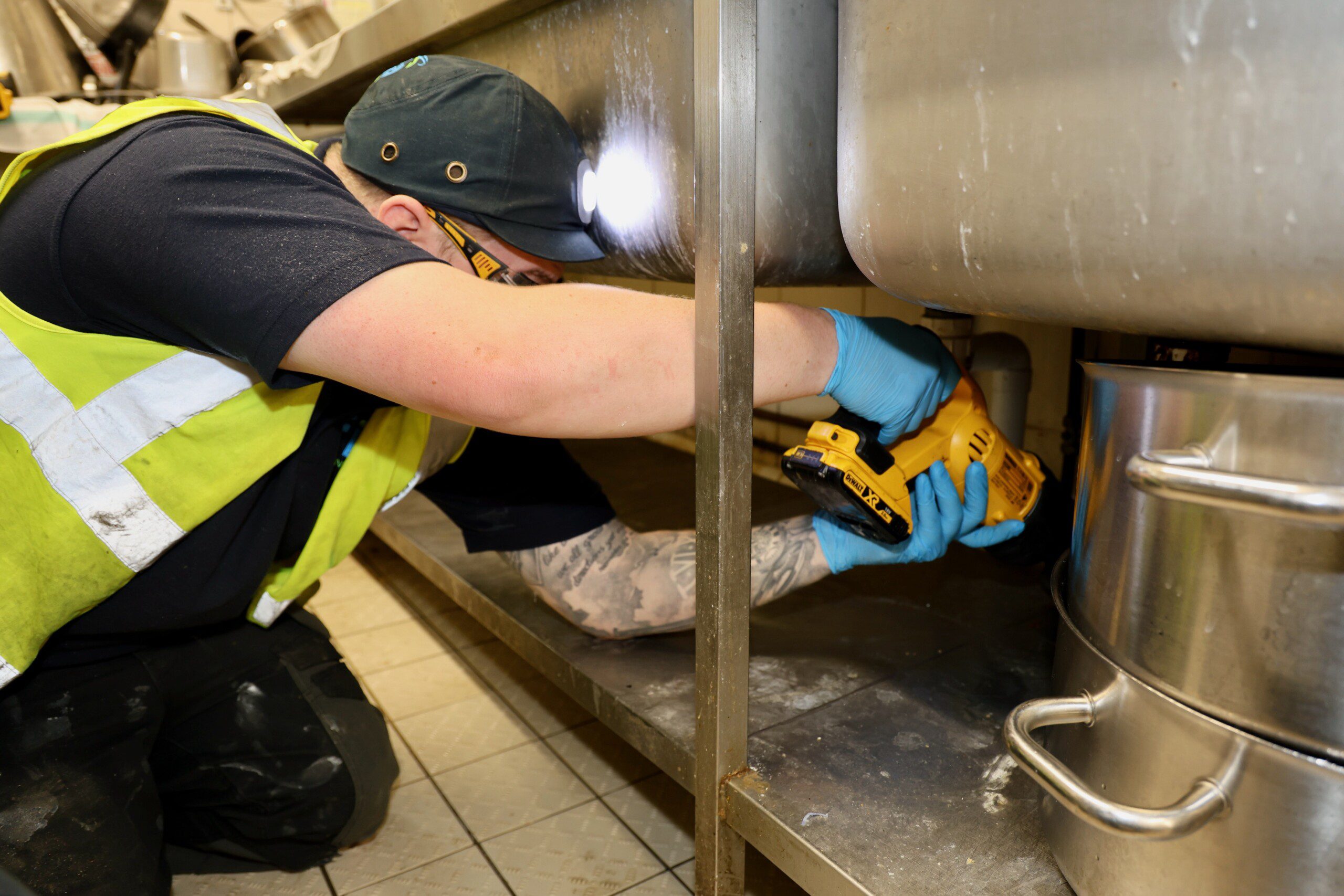Choosing the right grease management system for your restaurant depends on several factors, including the size of your kitchen, the wastewater flow, and the amount of grease your operations produce. To help you make an informed decision, we’ve put together this guide, focusing on Filta’s range of solutions and services.
Factors to Consider When Choosing a Grease Management System
Wastewater Flow Rate
For high-volume kitchens, it’s essential to choose a grease management system that can handle large amounts of wastewater efficiently.
Space Constraints
If your kitchen has limited space, you may need a compact solution like an under-sink grease trap or a dosing system. However, it’s worth noting that dosing systems alone do not meet legal requirements and should be used as supplementary measures.
Compliance
Your grease management system must adhere to government and water authority regulations, such as the Water Industry Act 1991. Non-compliance can lead to hefty fines and environmental damage.
Professional Assessment
An expert site survey from providers like Filta can identify the best grease management solution for your restaurant, tailored to your specific needs. Filta offers a free of charge site visit to get you started.
Grease Traps
How They Work
Grease traps are stainless steel units that capture fats, oils, and grease (FOG) before they enter the drainage system. Grease floats to the top, while cleaner water flows out.
Placement
Grease traps can be installed under sinks for small-scale kitchens or underground for larger models.
Maintenance
They require regular cleaning and emptying to prevent grease overflow. The frequency can vary from daily to monthly, depending on the kitchen’s grease production.
Best For
Small to medium-sized kitchens with flow rates below 50 gallons per minute or low grease output.
Considerations
While grease traps are cost-effective, they are less efficient for high-volume kitchens and require frequent maintenance.
Grease Removal Units (GRUs)
How They Work
GRUs are advanced systems that continuously remove grease from wastewater and separating the oil into an external container for disposal or recycling.
Advantages
- Continuous grease removal ensures consistent capacity.
- Lower maintenance costs compared to passive grease traps.
- Recovered oil is suitable for biodiesel production.
Types of GRUs
- Mechanical Oil Skimmers: Use a motorised wheel to skim grease from the surface.
- Non-Mechanical Units (e.g., FiltaFOG Cyclone): Utilise hydro-cyclonic technology for highly efficient FOG separation.
FiltaFOG Cyclone
Why It Stands Out
The FiltaFOG Cyclone is Filta’s flagship GRU, designed for maximum efficiency and sustainability.
Key Features
- Hydro-cyclonic technology ensures superior grease separation.
- Sealed outlet eliminates odours.
- Energy-efficient, operating at just 3 pence per day.
- Heavy-duty stainless-steel construction with a 10-year warranty.
- Recovered grease suitable for biodiesel production, offering potential resale value.
Dosing Systems
How They Work
Automated dosing systems inject biological enzymes into drains to break down FOG, helping to prevent blockages and odours.
Benefits
- Enhances the performance of existing grease traps or GRUs.
- Reduces odours and blockages.
Best For
Kitchens needing additional FOG management support. Remember to pair dosing systems with other grease management solutions to meet compliance standards. For more details, check out our dosing guide.
Why Choose Filta for Grease Management?
Filta offers industry-leading grease management solutions, from compact grease traps to advanced systems like the FiltaFOG Cyclone. Our focus on compliance, sustainability, and cost savings ensures your kitchen runs smoothly while protecting the environment.
Contact Filta today to schedule a site survey and find the perfect grease management solution for your restaurant.
FOG GRU Tips, Advice & Guides
For more information and expert advice, visit our news and articles section.

